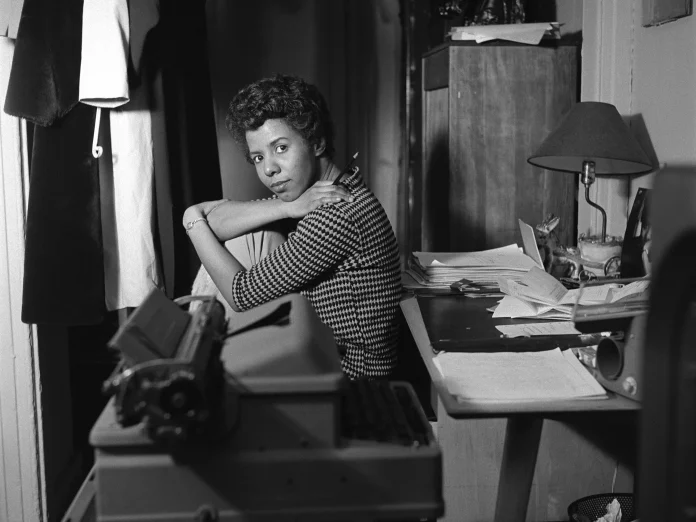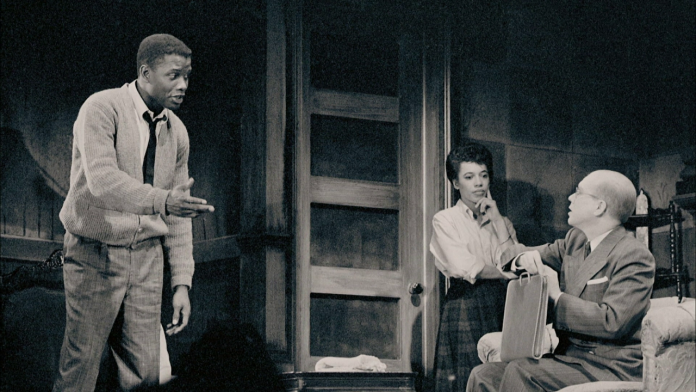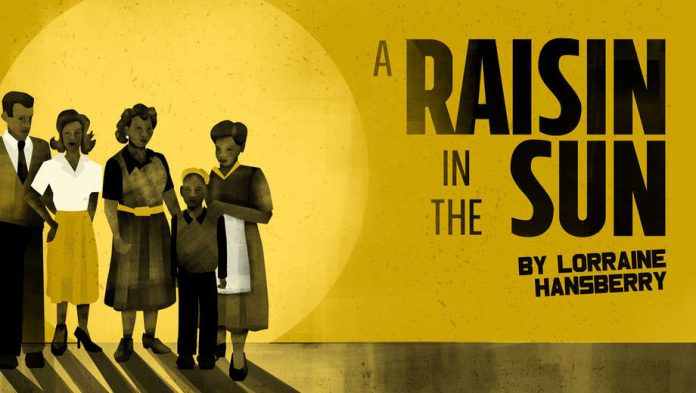A Raisin in the Sun is Lorraine Hansberry’s first play. She was an African American playwright and writer whose play got performed on Broadway. And while she wrote numerous plays, books, articles, and essays, this work remains unparalleled.
The play’s title is a line from Harlem, a poem by Langston Hughes. Hansberry’s inspiration for her masterpiece comes from her childhood experiences in Chicago in the 1930s/1940s. Her family moved into a white neighborhood and suffered horrible racist attacks intended to force them out of it. With the help of the Supreme Court order, Lorraine and her family won the battle.
A Raisin in the Sun Summary

As a parallel to her life, Hansberry narrates the story of a black family who struggles to find their way into middle-class society. The plot revolves around Lena, a sixty-year-old mother, who gets a $10,000 insurance check from her dead husband.
Lena’s son, Walter Lee Younger, is trying to provide for the family. He demonstrates his intention to invest the insurance check money to open a liquor store with two friends. Mama is against selling liquor and opposes this idea, leading to minor disagreements. Her daughter, Beneatha, wants to use the cash for medical education and has progressive views.
Finally, Mama uses a part of the check as a down payment for a house in a white neighborhood called Clybourne Park. She gives the rest of the money to Walter, who invests it secretly in the liquor store. At this point, Mr. Lindner from Clybourne Park tries to annul the deal and repurchase the house. He explains that the white residents don’t want a black family to leave nearby.
In the meantime, Walter’s business partner steals the money, so he has no choice but to accept Mr. Lindner’s offer. Eventually, pride wins, and the Youngers stay true to their plans to move to Clybourne Park. Besides their financial hardship and the fact that they aren’t welcome in the new neighborhood, the family stays united and optimistic.
A Raisin in the Sun – Major Themes
Though seemingly straightforward and with a straight line of narration, the play is a mix of complex characters and topics. Here are the predominant themes:
Female Strength and Identity
Mama is a towering figure, the head of the Youngers who wants to have it her way. She is proud of her identity, persistent in her plans, compassionate, and thoughtful. Mama struggles to provide the best living conditions for her kids and has no intention to stop.
Beneatha, the daughter, is a prospective medical professional who challenges her brother’s narrow-mindedness. If you want to explore their relationship, get more on Studydriver, your online essay helper. She also manages to fight off the patriarchal figure of Murchison, an affluent young Black American student.
The American Dream
Most symbols in A Raisin in the Sun remind us of the American Dream theme. More specifically, all family members want to fulfill their wishful thinking with the insurance money. But as with everything in the family, there is a conflict of dreams. However, Mama’s plan seems to be the most beneficial for everyone – a house in a better neighborhood.
Class Differences and Afro-American Marginalization
The theme of African Americans facing prejudice is an obvious one. Class differences are even more evident when Mama believes that a house in the white Chicago neighborhood is critical for their future. However, the words of a white man, Mr. Lindner, are more valuable since Afro-Americans were not perceived as equals and endured racial hatred.
Writing Style of A Raisin in The Sun

Lorraine Hansberry relied on the African American community dialect to write her work. This approach makes the masterpiece unique and pure. Beneatha and Asagai have formal education, which they show off in everyday conversation. The other characters speak a crude language, typical for the domestic setting. Lorraine managed to define an individual style for each character.
The play’s tone and diction match the neighborhood where the action takes place. The playwright heavily relies on sarcasm, symbolism, allusion, irony, and other figurative devices to empower her dialogs.
A Raisin In The Sun By Lorraine Hansberry: Characters Analysis

Lorraine delves into various human behaviors through different characters. Some are confident and self-filling, while others are selfish and repulsive. Here’s an abbreviated list of the most significant characters in the play.
Mama
Lena Younger is the matriarch of the family. A God-reverent humble woman, Lena is caring and would sacrifice everything for the happiness of her offspring. All her actions stem from her love for the family, like buying a better home and giving the remaining finances to Walter.
Walter
Walter works as a chauffeur but is unsatisfied with his job and living standard. He strives to improve the family’s position by setting up a business. Yet, his inexperience and lack of awareness lead to a misjudged investment and drag him into conflict with the family.
Beneatha
A twenty-year-old student, Beneatha dreams of becoming a doctor. But her plans change frequently, and the family scolds her for not supporting the household financially. She has two suitors at college: George Murchison, a snobbish wealthy Afro-American who rejects his origin, and Joseph Asagai, who helps Beneatha find her identity.
Ruth
Though Walter’s wife and Travis’s mother, Ruth doesn’t support her husband’s dreams. She never complains and is a mediator amid familial disputes.
Karl Lindner
He is a white man from Clybourne Park who tries to dissuade the Youngers from moving into the neighborhood. He is the epitome of racism against Afro-Americans and white hostility toward Black people living in high-end communities.
The Use of Literary Devices

A Raisin in the Sun by Lorraine Hansberry is full of figurative speech. Above all, the entire play rests on conflict: generational, ideological, gender, external, and internal. And through disagreement, there is a substantial transformation of characters. While Lena and Walter Lee are dynamic characters who change their behavior as the play progresses, Beneatha, Ruth, Asagai, and Lindner remain static.
Moreover, the work abounds with imagery that helps readers perceive events with all senses. In the instructions, Hansberry beautifully portrays color, light, sound, and movement. Symbols and parallels are common, too.
The play also uses irony, sarcasm, similes, foreshadowing, and metaphors. Such literary devices help Lorraine depict how the family falls apart and then reunites with a shared goal in mind.
To Conclude
Set in a run-down African American neighborhood in Chicago during the 1950s, this masterpiece was a literary game-changer. And though the action happens in a small apartment with residents from three generations, the impact was significant at the time. It perfectly portrayed conflict, clashing personal aspirations, and the struggle of a Black family in the pre-Civil Rights period.








